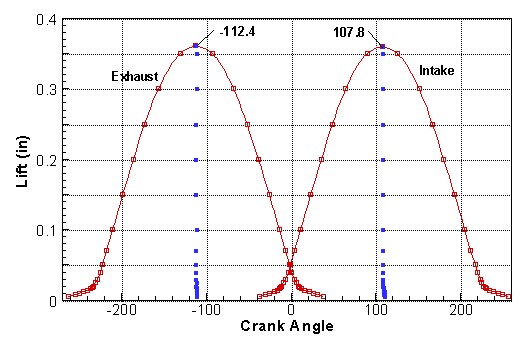I like the way my high school physics teacher put it: The 4 cycles (or strokes) are:
1) Suck
2) Squeeze
3) Pop!
4) Phooey
In detail, the intake stroke is where the piston goes down with the intake valve open, to draw fuel/air mixture into the cylinder
Compression stroke is when the piston rises, compressing the fuel/air mixture into a much smaller volume. The compressed mixture is ignited.
Power stroke is where the burning mixture expands (mostly due to the heat created by the combustion process) and forces the piston back down.
Then exhaust stroke is where the piston goes up with the exhaust valve open, to expel the burned gases into the exhaust system.
Such is the theory, but many practical considerations arise when trying to build an engine that turns faster than just a few hundred rpm. It takes time for the valves to move, and time for the gases to start moving even once the valve is open. Once they are in motion, they tend to keep moving even if there is no pressure differential pushing on them. So, at the end of the exhaust stroke, the exhaust valve stays open for a short time even after the piston reaches the bottom, so inertia can continue carrying exhaust gas out the exhaust valve. At the same time, the intake valve starts to open shortly before the piston reaches bottom, so the intake mixture can start to move from being pulled through by the partial vacuum left by the exiting exhaust gases. The result is more effective cylinder evacuation and filling (at higher rpm of course).
You can set cam timing at either point, with either #1 firing or #4 firing. Since #1 and #4 come to TDC at the same time, the result is equivalent. The only real difference is which way the ignition rotor is pointing. The engine won't run if you try to fire a cylinder at TDC between exhaust and intake, it has to fire the opposite cylinder at TDC between compression and power.
I didn't see any information about valve timing on Macy's site. Do you have a link? It may be as simple as he is looking at maximum valve lift rather than being "on balance". There are lots of different methods, with varying advantages. The big advantage of the "on balance" (or "on rock") method is it's simplicity. Using a degree wheel and mapping out lift every degree or two of cam rotation is much more complicated, but gives you a lot more information, like whether the cam you actually have is properly cut, made to stock specs, and so on.
Larry Young's (no relation AFAIK) web site gives more information on "degreeing" a cam and why
http://www.tildentechnologies.com/Cams/Tip_DegreeCam.html Hi Guest!
Hi Guest!

 smilie in place of the real @
smilie in place of the real @
 Pretty Please - add it to our Events forum(s) and add to the calendar! >> Here's How <<
Pretty Please - add it to our Events forum(s) and add to the calendar! >> Here's How << 

